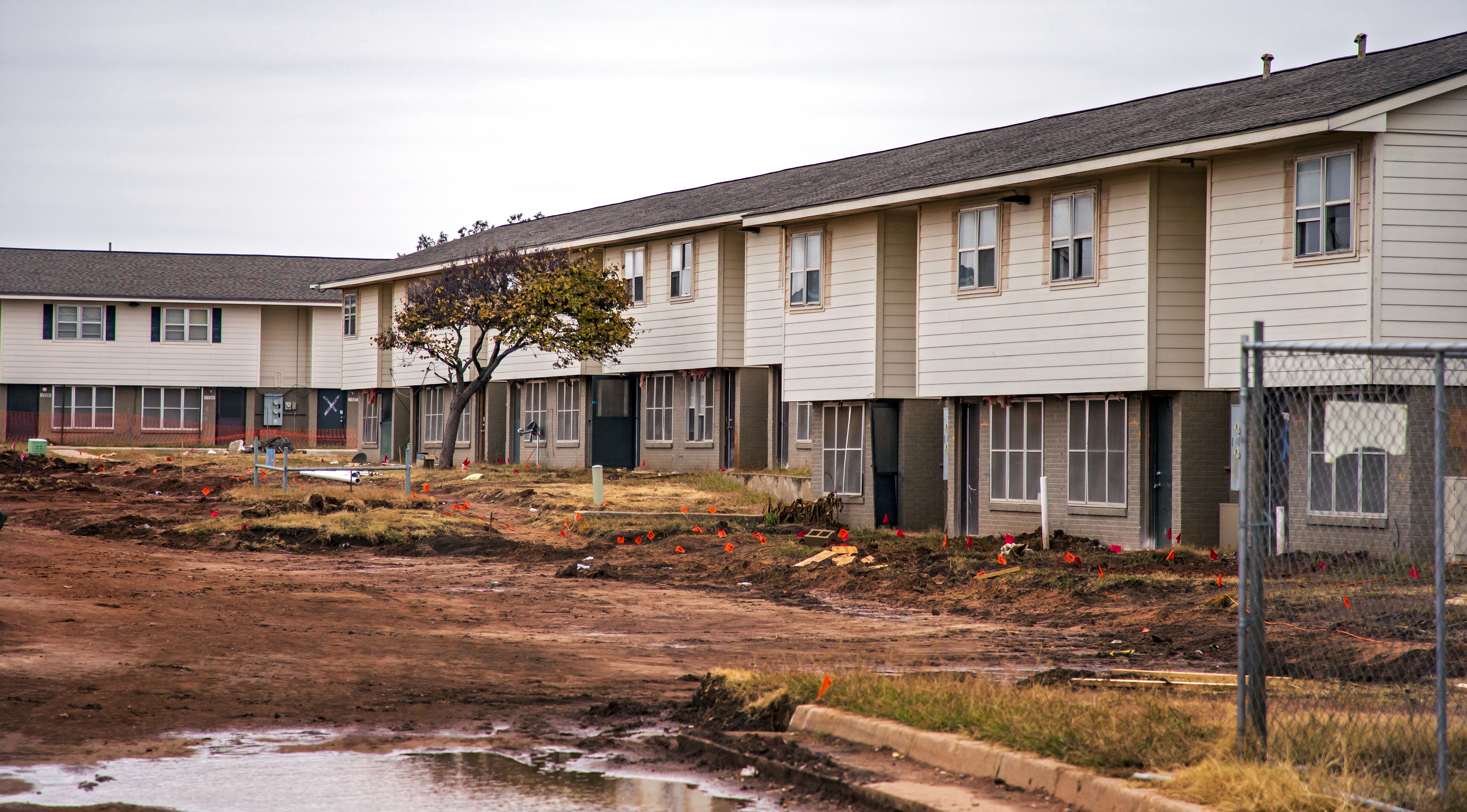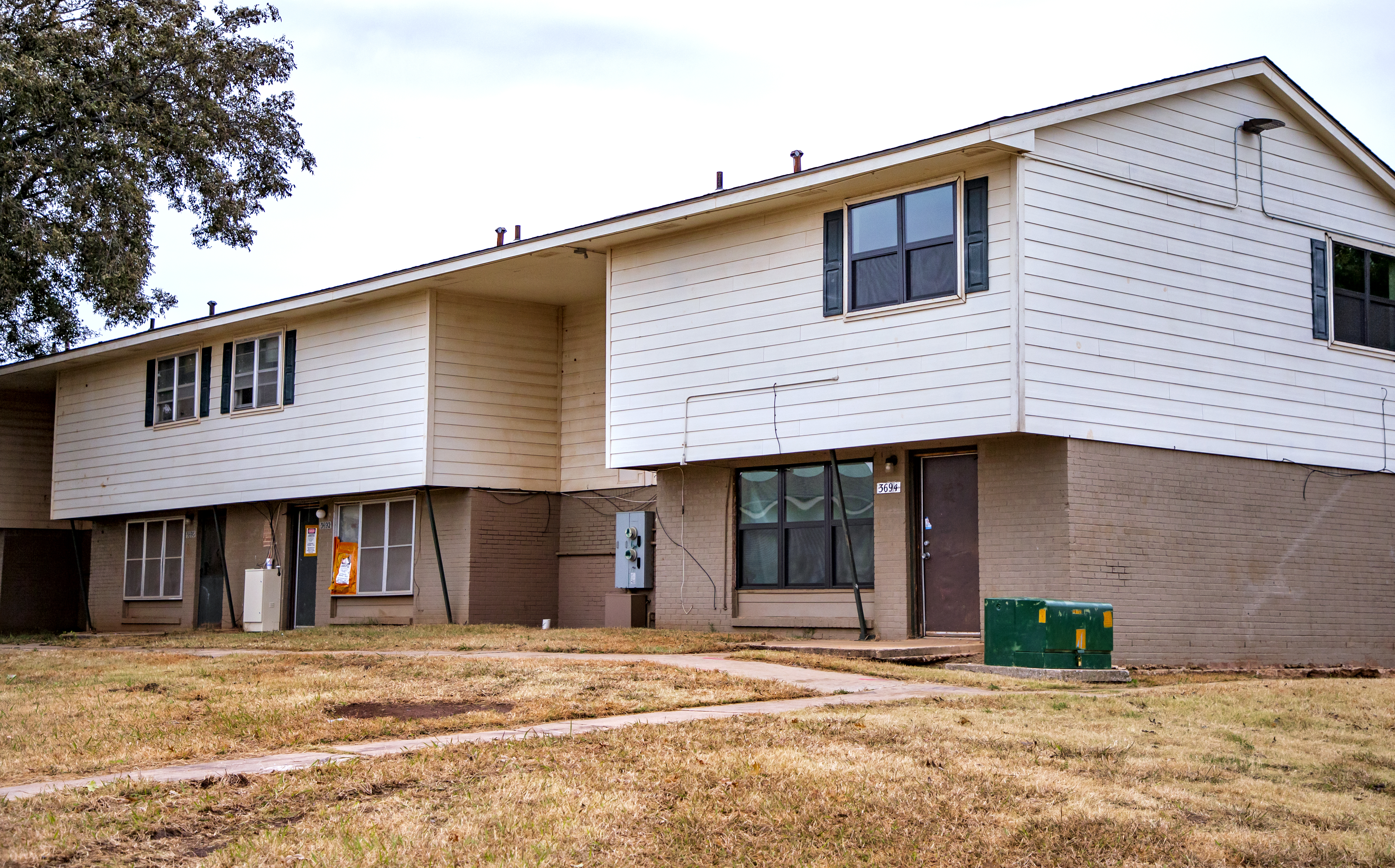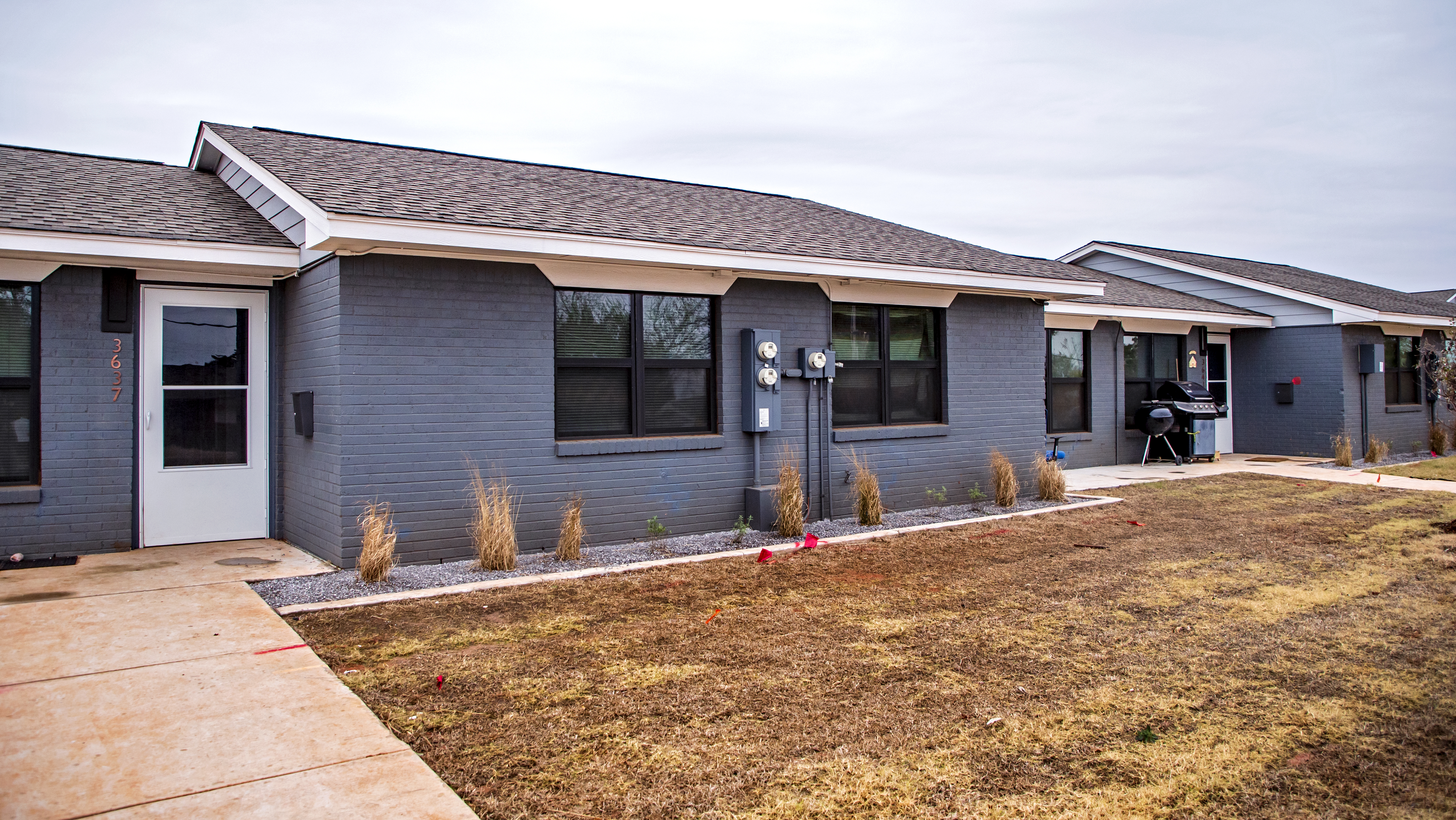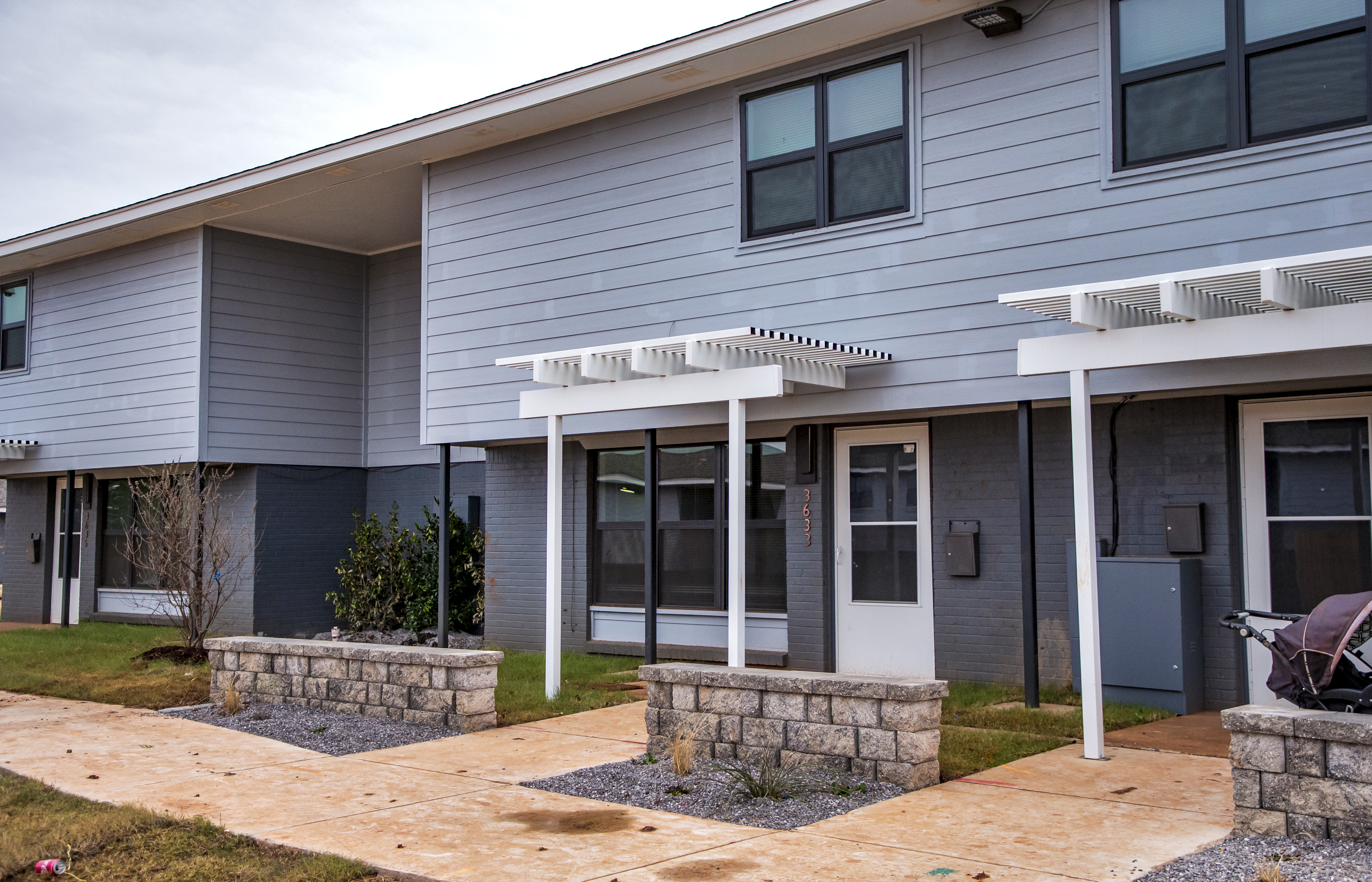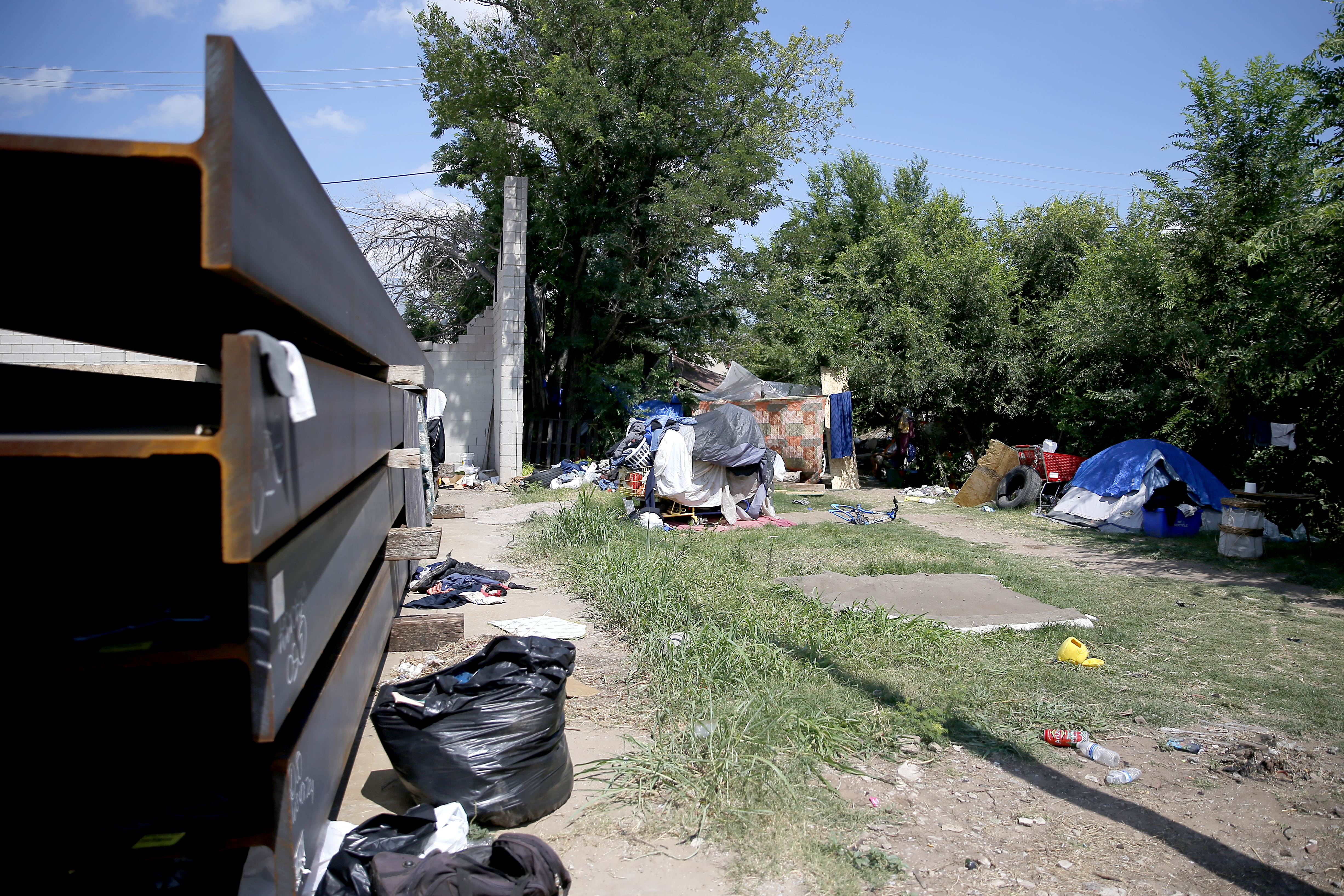Sooner Haven apartments near NE 36th St. on Thursday, Nov. 7, 2019. An affordable housing proposal in MAPS 4 would help renovate more properties like this one on the northeast side of Oklahoma City. Chris Landsberger | The Oklahoman
Housing hope
Affordable housing proposal to address homelessness; some details still vague
When it comes to addressing homelessness, service providers believe Oklahoma City is at a tipping point.
Housing costs are rising. Serious mental health disorders are a continuing problem. Substance abuse plagues communities. Social services are strapped for funding.
If left unaddressed, these factors bring about long-term crises comparable to the significant housing and homelessness issues in cities like Denver and San Francisco, said Ian Colgan, assistant executive director of the Oklahoma City Housing Authority.
“In those cases, the government wasn’t quick enough to get ahead of those issues,” Colgan said. “But we are in a position where we can still get ahead, which is really unique in American cities.”
And to get ahead, organizations like the housing authority, the Homeless Alliance and Mental Health Oklahoma plan to take a $50 million investment from MAPS 4, leverage over $400 million in outside funding and reshape public housing in Oklahoma City.
Ian Colgan, assistant executive director of the Oklahoma City Housing Authority, discusses renovations at Sooner Haven apartments in northeast Oklahoma City. Chris Landsberger | The Oklahoman
Snapshot of homelessness
Over the last decade, the number of individuals experiencing homelessness in the metro has been on an overall decline, though there have been some fluctuations, according to various official counts of the city’s homeless population.
Service providers have increased collaboration and invested in new software to share data. A new, low-barrier night shelter is set to open in early 2020. Criminal justice reform has helped keep homeless individuals out of jail.
But the number of individuals experiencing chronic homelessness and those who are unsheltered at night is steadily increasing.
And dismal cost estimates make it difficult to stop the inflow of people becoming homeless, according to the Oklahoma Housing Finance Agency’s Housing Needs Assessment.
Someone working 40 hours a week at a minimum wage job (currently $7.25 an hour) would earn $15,080 a year. Average rent in Oklahoma County is about $750 per month, so $9,000 per year. That means the person has just about $6,000 left over for all other expenses.
“We’ve gotten about as far as we can go with collaboration, improved processes, information technology and shared databases,” said Dan Straughan, executive director of the Homeless Alliance, at a city council meeting this summer. “In order to more fully reduce homelessness in our community, we need more affordable housing.”
The Sooner Haven apartments in northeast Oklahoma City are pictured before renovations at the property. Chris Landsberger | The Oklahoman
The newly renovated Sooner Haven apartments are seen after undergoing property upgrades. Chris Landsberger | The Oklahoman
The newly renovated Sooner Haven apartments are seen after undergoing property upgrades. Chris Landsberger | The Oklahoman
In order to more fully reduce homelessness in our community, we need more affordable housing.”
The proposal
MAPS 4 is a one-cent sales tax initiative designed to fund 16 community-improvement projects. It’s estimated to generate at least $978 million in revenue to fund each project, and the tax will be voted on Dec. 10 by Oklahoma City residents. The affordable housing proposal is one part of a larger shift to have MAPS focus on serious social issues in the community.
If MAPS 4 passes, city leaders plan to use the $50 million allocation, plus hundreds of millions from other sources, for a few different things.
The city currently has about 3,000 units of public housing for those that have extremely low-incomes, are seniors or have disabilities. Part of the proposal is to rehab those units, most of which were built in the 1970s and are at risk of falling apart.
Colgan said the goal is to move these units — which range from apartments to duplexes to houses — away from being low-end properties to being neighborhood assets with updated facades, landscaping and community centers.
There will also be 500 new units of permanent supportive housing. This type of housing is in smaller groupings of 20 or 30, Colgan said, and includes services and case management on site for those who have serious mental health or substance abuse struggles.
The living room in one of the newly renovated Sooner Haven apartments. Chris Landsberger | The Oklahoman
The kitchen in one of the newly renovated Sooner Haven apartments. Chris Landsberger | The Oklahoman
And finally, 500 new units of workforce housing, which Colgan said will be targeted at high-growth, high-cost areas most low-income individuals are typically priced out of but usually come with better access to schools, transportation and jobs.
“With this proposal, there is a recognition that we can make strategic but not overabundant investments to really deliver a program that will create thousands of quality units and also create one of the most expansive and innovative permanent supportive housing programs for a city this size,” Colgan said.
Compared to some of the other MAPS 4 proposals, the affordable housing project is still somewhat vague.
While basic concepts are known, details like where the new properties will be built and exactly how service providers like the Homeless Alliance will be able to expand their services are to be determined in the future, Straughan said.
“The last MAPS dollar might come in in 2029, and who knows what Oklahoma City is going to look like in 10 years,” Straughan said. “So trying to make a guess today of where you would site a 50-unit affordable housing complex in 10 years is kind of a game.
“I know that is nervous making for some people. But it is what it is when you are talking about a 10-year funding stream.”
A homeless camp in Oklahoma City is seen in 2018. Bryan Terry | The Oklahoman
A woman walks toward a homeless camp in Oklahoma City in 2018. Bryan Terry | The Oklahoman
A police officer searches for homeless campers in Oklahoma City in 2014. Paul Hellstern | The Oklahoman
Leveraging funding
One unique aspect of the affordable housing proposal is the ability to bring in outside money.
It’s a complicated process, Straughan said, but it boils down like this: The federal government, state government and various local groups have a host of programs devoted to providing funding for housing, combating homelessness and dealing with mental health and addiction.
In some cases, there are restrictions on who can get the funding. One program might require the properties in question to already be owned. Another might match funding dollar for dollar.
So having a chunk of money upfront puts Oklahoma City at an advantage, Straughan said.
“It is very fluid, and you do have to be comfortable with uncertainty on some level,” Straughan said. “But I think it is a safe bet that the economy will allow there to be funding on the federal and local levels.”
Politically, there has been support for the proposal from various city councilors and the mayor.
“I think it is extremely important that (MAPS 4) includes homelessness. It won’t solve all the problems… but it’s welcome assistance,” Mayor David Holt said earlier this summer. “We can do more, and if there is a need, we should do more.”
What will you pay?
The Oklahoman’s MAPS 4 cost calculator can help you estimate how much of your sales tax would be allocated to MAPS 4 if the project is approved. Enter in an estimated monthly amount spent on items subject to sales tax — things like groceries, clothes, home supplies, decorations or other tangible products — to see how much MAPS 4 could cost you over the next 8 years.
